Ferrara and surroundings between sport and nature
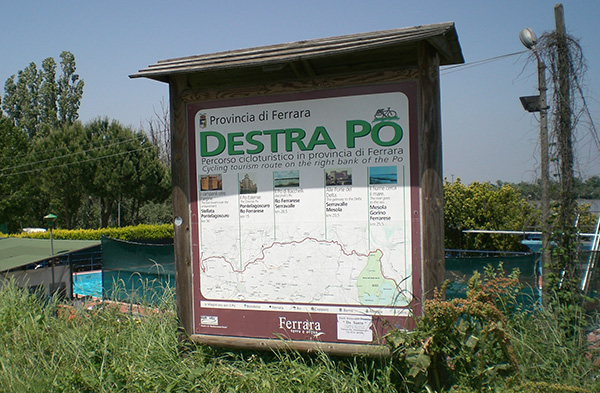
Ferrara and surroundings: what is there to do?
Sport
- Cycle paths for tourists who love cycling
and mountain biking:
The Destra Po is a 120 km long cycle route following the river. It starts from Stellata di Bondeno and ends in Gorino (in the region of Ferrara). The route is flat and therefore suitable for both adults and children. Immerse yourself in the quiet of nature and relax, enjoying the de-stressing effect of Slow Tourism.
The route is divided into 5 stages:
- Stellata-Pontelagoscuro (Km 35)
- Pontelagoscuro-Ro (Km 16)
- Ro-Serravalle (Km 26)
- Serravalle-Mesola (Km 20)
- Mesola-Gorino (Km 16)
- Sailing centre at the Lido di Volano: go out
in catamarans and sailing boats. For lovers of
extreme sports there are centres where you can
hire windsurfing and kitesurfing equipment.
- Horse riding treks.
- Nordik walking in the green and pleasant
pinewood at the Lido di Volano.
- Valle Gaffaro airfield for tourist flights
over the Delta del Po.
- Karting circuit, motocross racetrack and
International Raceway track.
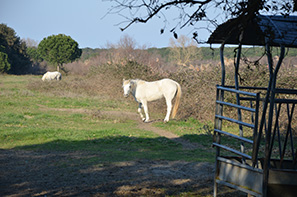 |
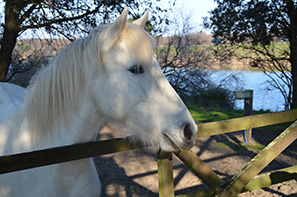 |
|
Horse riding treks - Camargue horses at the
Lido di Volano |
|
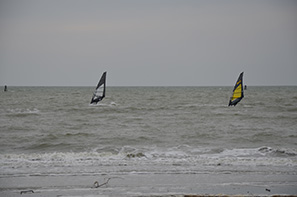 |
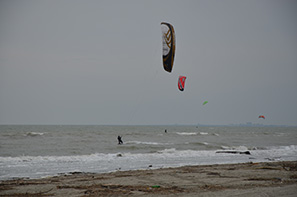 |
| Water
sports at the Lido di Volano: from sailing
to kitesurfing |
|
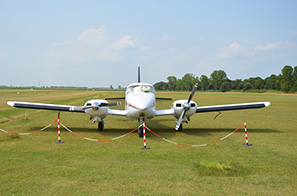 |
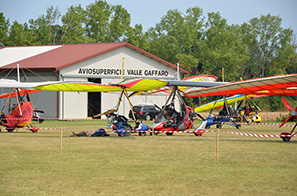 |
|
Valle Gaffaro - Airfield for tourist flights |
|
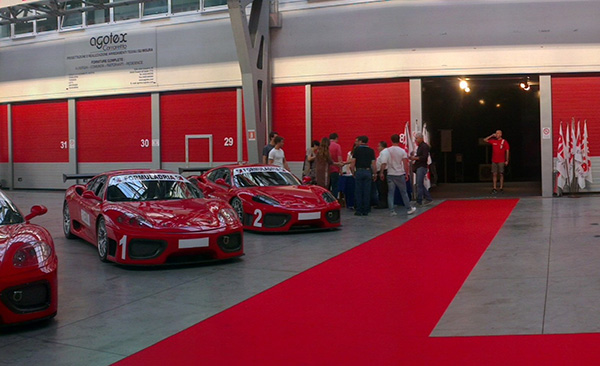 |
|
| The Challenge - Ferrara | |
Festivals and Wellness centres
- Discover local produce at the eel festival
in Comacchio, the asparagus festival in Mesola,
the clam festival in Goro, the Delta rice (PGI
status) festival in Jolanda di Savoia and the
strawberry festival in Lagosanto.
Take good care of yourself and relax in a wellness centre. The area offers wellness gardens, spa and beauty centres, thermal treatments and medical spas.
Wellbeing starts from the table: examples of typical products of Ferrara:
- Pumpkin cappellacci (stuffed pasta) or
"Caplazz" are referred to as “pumpkin tortelli
with butter” in the Renaissance recipe book
Scalchi, used by the Este family in Ferrara.
- Cappelletti or "caplit" in broth is a
traditional dish from the Emiglia Romagna region
of Italy and adored in the Ferrara area.
- Coppia ferrarese or "Ciupeta" (PGI status):
the history of this local bread dates backs to
1536 and an important dinner hosted by Messer
Giglio for the Duke. From this point on there
are references to a twisted-shaped bread.
- Ciambella or "brazadela": this rustic, dry
cake is flavoured with lemon and served all year
round in both the city and countryside. It is
dipped into local wines.
- Comacchio Fish basin eels: the strong taste
of the Delta comes from an intense,
millennium-long marrying of land and water, dry
and wet, people and the sea.
- Voghiera garlic (PDO status): in and around
Ferrara Voghiera garlic is an indispensable part
of every dish. It is used in particular in fish
dishes or to add flavour when preparing sausages
such as salami and pancetta.
- Mesola green asparagus (PGI status): almost
40% of Emilia-Romagna’s asparagus production
takes place at the foot of the River Po, due to
the sandy soil and the prevalence of water.
- Ferrara’s Pampepato or "Panpapat" is a cake
with a very unusual history, flavoured with a
pinch of history and aromatic spices.
- Red radicchio or "radic": the sandy land of
the Delta is perfect for growing radicchio and
farming has continued here for several years.
- Rice of the Delta del Po (PGI status): the
precious grain arrived in what is considered the
Italian Camargue in around 1500. The rice was
well suited to the Ferrarese land, particularly
in Jolanda di Savoia which produces rice of
exceptionally high quality.
- Salamina or salama da sugo: this old dish
was first referenced in a letter from Lorenzo
de' Medici to the Duke Ercole I d'Este, in which
the former thanked the prince of Ferrara for the
salama da sugo, which he had very much enjoyed.
- Salama da tai is a type of sausage. Produced
in the winter months, it is matured for at least
six months in cold rural houses (with no
heating) before being eaten. This period of
maturation brings out the best of its flavours
and aromas.
- Torta tenerina or "tacolenta" is a local
chocolate cake. Traditionally the cake is thin
and has a creamy middle, giving the dessert its
name.
- Bosco Eliceo Wine (PDO status): over time a
wine tradition has been established in Ferrara
using the Golden Grape variety. The origins of
the variety appear to date from the thriving
Etruscan town of Spina.
- Goro clams: at the outermost edge of the
province of Ferrara is Goro cove, an ideal
habitat for countless fish species, including
mussels and clams.
- Pumpkin: pumpkins from Ferrara are known as
"violina" due to their intense, orange-coloured
pulp. Compact, sweet and firm, the pumpkins grow
in unique, organoleptic land, producing a
high-quality product.
- Zabov Moccia: this liquor is produced in the
city of the egg "Zabaglione". The typical
Italian recipe uses milk, fresh egg yolks, sugar
and a small amount of alcohol. It has an alcohol
content of 15% and a pleasant taste of brandy